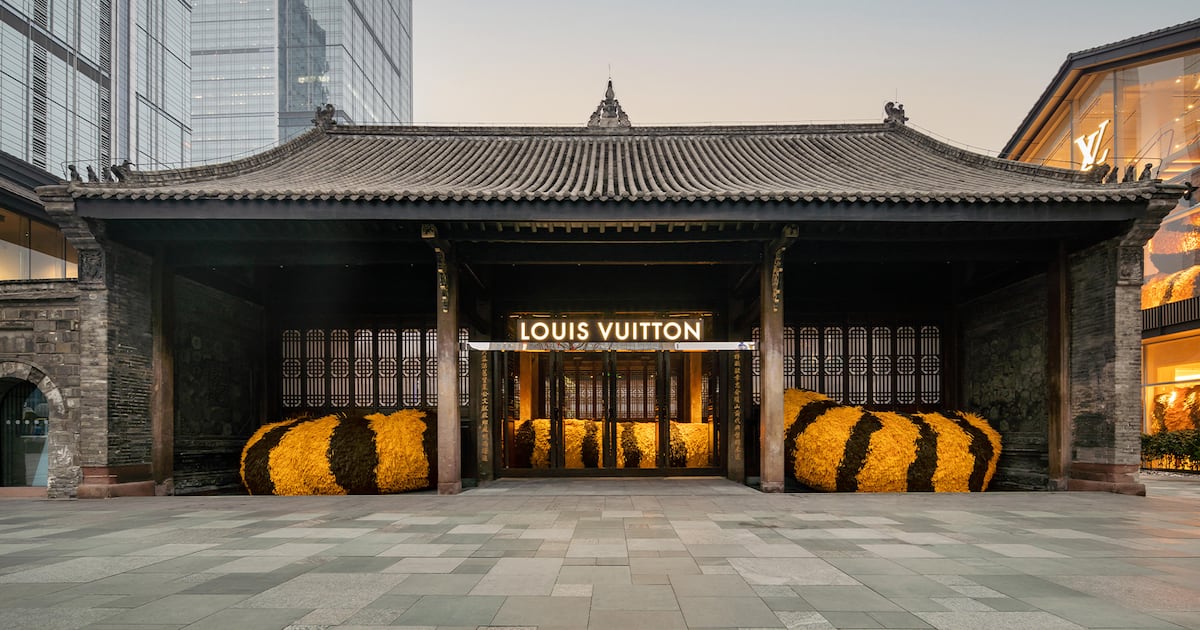Chinaâs second-hand and grey markets for luxury goods are booming, as price hikes from luxury brands in a weak economy are prompting some shoppers to look for cheaper ways to buy them, deepening concerns for the likes of LVMH.
LVMH, the worldâs biggest luxury group, reported a 3 percent fall in quarterly sales last week, undershooting estimates in its first decline in quarterly sales since the pandemic as demand in China and Japan weakened.
Italyâs Salvatore Ferragamo also reported a fall in quarterly revenue, hit by a slowdown in demand from China.
âThe elephant in the room is that, in China, as long as price gaps (between China and other countries) exist, there is the opportunity for price sensitive consumers to go to the grey market,â said Max Piero, CEO of luxury intelligence consultancy Re-Hub, which tracks grey market luxury purchases in China.
That market, estimated to be worth $57 billion a year, has been fuelled in recent years by the rise of platforms such as DeWu, where luxury products, often sourced overseas, are sold at discounts from 20 percent to over 50 percent to prices at Chinese flagship stores.
Re-Hub estimates that sales across 48 brands on DeWu rose 19 percent year on year in the second quarter to more than 7 billion yuan ($984.4 million).
Chinaâs retail sales, a gauge of consumption, grew a subdued 3.2 percent in September and the weakness is a bad sign for global luxury giants as China accounts for around 25 percent of worldwide revenues for the sector.
Growing consumer interest in both the second-hand and grey markets is adding a headache to top-end brands seeking to defend their sales in China.
âThe rising prices of those luxury brands is definitely one of the reasons that more and more consumers are turning to the secondary market,â said Yi Kejie, a 28-year-old marketing content manager and luxury consumer.
Following the release of their third quarter sales, executives of LVMH, home to Louis Vuitton and Dior, defended their labelsâ upmarket push and said they did not plan to introduce new ranges of more affordable products.
They also said they had no intention of getting involved in the second-hand market, noting that the tight control their brands hold on distribution makes them less exposed to parallel markets.
But Chinaâs second-hand market is also fuelled by the countryâs slowing economy, as more people are looking to make some cash off their luxury collections.
âThe number of sellers is growing really fast, and the majority of them are selling luxury items for the first time. But for the buyerâs side, itâs pretty steady,â said Zhu Tainiqi, founder of second-hand luxury goods marketplace ZZER.
That has caused average purchase prices to drop from last year, and average order values also fell around 10 percent, Zhu said, adding however that brands such as Louis Vuitton and Coach are still selling quickly.
The second-hand luxury market in China – which includes platforms such as Plum, ZZER and Alibaba-owned Xianyu – has grown at a compound annual growth rate of over 30 percent since 2020, according to consultancy iResearch estimates, although Zhu personally thinks this year the sector as a whole in China is more likely to grow around 20 percent this year.
Zhu said some of the consumers turning to second-hand and grey market goods will still buy new luxury items and shift just part of their consumption to those markets.
âIf the deal is really attractive, and they trust us, they notice every item is authenticated, they will buy it,â he said.
By Casey Hall; Editing by Miyoung Kim and Raju Gopalakrishnan
Learn more:
Inside Luxuryâs Slowdown
Economic headwinds, high prices and a lack of novel design are all weighing on what was previously fashionâs most dynamic segment. How severe is the slowdown and how long will it last?

